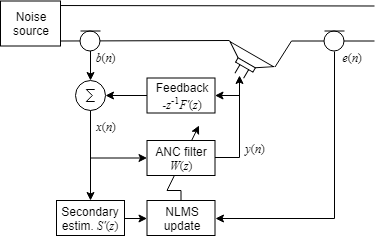LMS Update
Estimate weights of LMS adaptive filter
- Library:
DSP System Toolbox / Filtering / Adaptive Filters
Description
TheLMS Updateblock estimates the weights of an LMS adaptive filter. Specify data and error as inputs and the block computes the filter weights based on the algorithm specified in theAlgorithm帕拉meter. For more details on the algorithms, seeAlgorithms.
You can configure the block to operate as a tapped-delay line FIR filter or as an adaptive linear combiner using theAdaptive filter mode帕拉meter. The block can also adapt multiple filters independently when you specify theNumber of adaptive filters帕拉meter to a value greater than 1.
You can use this block to compute the adaptive filter weights in applications such as system identification, inverse modeling, and filtered-x LMS algorithms, which are used in acoustic noise cancellation. For more details, seeReferences.
Ports
Input
Output
Parameters
Model Examples
Block Characteristics
Data Types |
|
Direct Feedthrough |
|
Multidimensional Signals |
|
Variable-Size Signals |
|
Zero-Crossing Detection |
|
Algorithms
References
[1] Madisetti, Vijay, and Douglas Williams. "Introduction to Adaptive Filters."The Digital Signal Processing Handbook.Boca Raton, FL: CRC Press, 1999.
[2] Akhtar, M. T., M. Abe, M. Kawamata. "Modified-filtered-x LMS algorithm based active noise control systems with improved online secondary-path modeling." IEEE Symposium on Circuits and Systems, 2004.
[3] Orfanidis, Sophocles J.Optimum Signal Processing. An Introduction. 2nd Ed. Englewood Cliffs, NJ: Prentice-Hall, 1996.http://eceweb1.rutgers.edu/%7Eorfanidi/osp2e/osp2e.pdf



